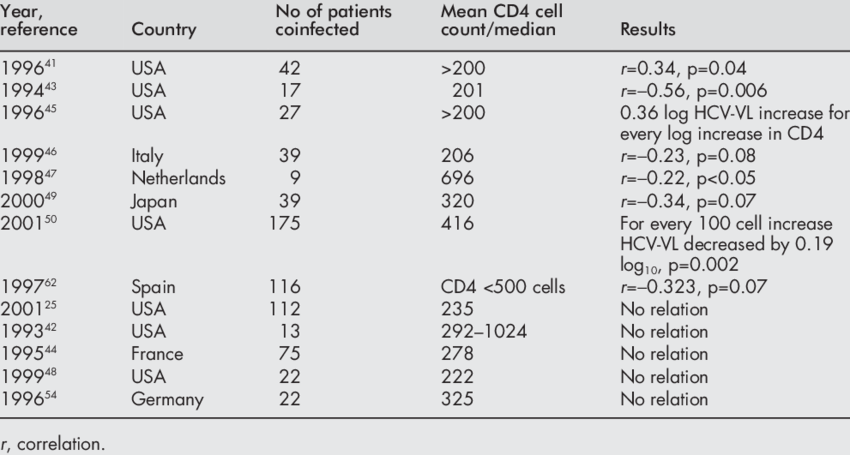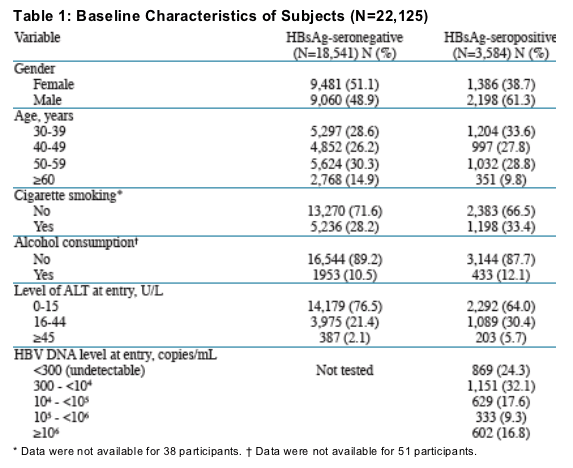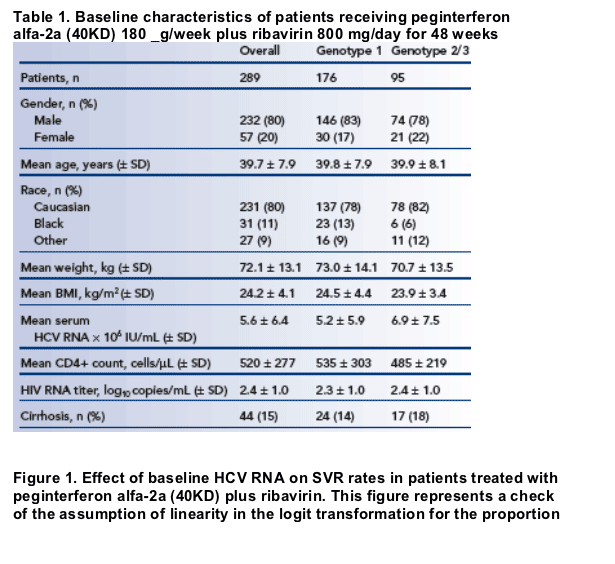How Is The Test Used
The viral load is helpful in several areas:
- Diagnosis. The test can detect the presence of HCV a few days after HCV infection, before an antibody test becomes positive.
- Confirming chronic infection. As noted above, up to 15% of people infected with HCV clear the infection. This process may take up to 6 months. But antibody tests on these people will still show a positive result. A viral load test is used to determine if they have chronic infection.
- Predicting treatment success. People with viral loads below 400,000 before they start treatment generally have better treatment results.
- Managing therapy. The test shows if treatment is controlling the virus.
There are several viral load measures of treatment response. These are described below.HCV viral load cannot be used the same way as the HIV viral load .It is not a good indicator of how serious the hepatitis is, or how fast it will progress. It is also more complicated to use in evaluating response to treatment.
in the past, lower viral loads are associated with better response to HCV therapy, but this is no longer the case with modern HCV drugs. Also, higher viral loads are linked to higher risk of transmission of HCV, at least from pregnant mothers to their newborns.
There are several types of HCV viral load response to treatment: ETR :This means having an undetectable HCV viral load at the end of HCV treatment.
Understanding Your Test Results
The test results may be vary depending on gender, age, health conditions, and stage of infection.
If the test results show high Hepatitis C viral load levels than normal range and signs of liver damage it may indicate that you are at an active stage of Hepatitis C infection and need treatment.
If undetectable or low viral loads and no signs of liver damage, it may indicate that you are at an inactive stage of Hepatitis C infection .
In individuals receiving treatment for hepatitis infection, the presence of high viral loads indicates a poor response to treatment.
In pregnant women with high viral loads may indicate a need for treatment during their third trimester of pregnancy to reduce the risk of infection in newborns.
In individuals receiving treatment for hepatitis infection, if the blood sample does not contain Hepatitis C viral load or significant low levels it may indicate a more likely or likely response to treatment.
| Gender |
What Do Viral Load Test Results Mean
Viral load testing can be confusing. The results do not always predict symptoms or the amount of damage HCV may be doing to your liver. A high viral load doesnt mean that you are getting worse. If your viral load is lower than a previous test, and you are not on HCV treatment, it does not mean that you are getting better.
When you have a viral load test, the results are typically reported in international units per milliliter and copies per milliliter. A viral load is considered:
- High if greater than 800,000 IU/mL
- Low if less than 800,000 IU/mL
Read Also: Is Hepatitis C Contagious Airborne
Interpreting Hcv Rna Test Results
It is essential that the provider understands how to interpret HCV RNA test results, especially during the course of HCV treatment.
| Result of HCV RNA Test | Interpretation |
|---|---|
| A quantified viral load — any exact number | Ongoing HCV infection |
| “Detected” | The HCV RNA is detectable but the number of international units is so low that it cannot be quantified accurately. This indicates extremely low level of virus is present. |
| “< 12 IU/mL” or “< 15 IU/mL” or “< 25 IU/mL” All of these are “less than the LLOQ” | HCV RNA is undetectable. No virus is detected at all in the patient’s serum specimen. |
Hcv Core Antigen Testing

The hepatitis C core antigen is a viral protein. Since the core antigen is part of hepatitis C virus, it can usually be found in the bloodstream two weeks after infection.
Since HCV core antigen testing is simpler and less expensive than viral-load testing, some experts suggest using it in resource-limited settings. Core antigen testing can be usedoften with HCV antibody testingto detect acute HCV or to confirm chronic HCV infection. HCV core antigen testing can also be used to measure treatment outcome. Although it does not detect low levels of HCV , usually the hepatitis C viral load is much higher in people who relapse after HCV treatment.
Also Check: Can You Get Rid Of Hepatitis
Appropriate Uses Of The Hcv Rna Test
There are 4 major reasons that HCV RNA tests are used:
More rarely, HCV RNA is used when either very acute HCV infection is suspected or a false HCV Ab is suspected.
It would not be appropriate to repeatedly order HCV RNA viral load screening for a patient who is not on or was recently on HCV treatment, or to use the HCV viral load to determine the severity of the patient’s infection or the patient’s risk of developing significant liver disease.
Meaning Of Hcv Viral Load
The number of HCV RNA international units per milliliter of blood must be measured before treatment and during the course of treatment, to assess response. Before treatment, however, the HCV viral load is not related to the patient’s liver disease severity or HCV prognosis. This is important for patients and providers to understand.
Note: In hepatitis B, unlike hepatitis C, a higher HBV DNA viral load does correlate with increased disease severity and increased likelihood of outcomes such as hepatocellular carcinoma.
Recommended Reading: Antiviral Medication For Hepatitis B
Viral Loads During Treatment
Checking your virus count before, during, and after treatment tells your doctor if and how well your drugs are working. A rising viral load doesnât always mean youâre getting sicker, and a drop in the virus count isnât a sign that youâre on your way to being cured.
Unlike with HIV, where lower viral counts usually mean longer, healthier life, HCV viral loads donât say much about how fast your hep C is progressing or how your disease might turn out. For that, your doctor will need to check your liver enzymes and your liver tissues and run other tests.
Usually, your hep C treatment will be the same no matter how high or low your viral load is. Your doctor will use your virus levels to monitor how you respond to the medication. The drugs youâre prescribed will depend less on your viral count than on your overall health, genetic makeup of your HCV, and other things.
Show Sources
Enzyme Immunoassays For Detection Of Hepatitis C Antibody
The HCV Ab test is used for initial screening for hepatitis C. The test is performed by enzyme immunoassays , which detect the presence of hepatitis C antibodies in serum. The result of the test is reported as positive or negative. Third-generation EIAs have a sensitivity/specificity of approximately 99%. However, the presence of HCV Ab does not indicate whether the infection is acute, chronic, or resolved. A positive antibody test result should be followed up with an HCV RNA test to confirm that viremia is present.
Also Check: Can Hepatitis C Be Cured Totally
Why This Test Is Performed
This test is performed to check the presence of Hepatitis C Viral load in the blood. The doctor may ask you to undergo this test if you are suffering from symptoms and conditions such as liver cancer, cirrhosis, jaundice, fever, dark urine, abdominal pain, joint pain etc. If an individual is on the treatment for Hepatitis C virus HCV then the doctor may ask to perform this test to evaluate and to check the effectiveness of the treatment. Mostly, this test is done along with other hepatitis tests to confirm the diagnosis.
Who Is Most At Risk Of Contracting Hepatitis C
You have a high risk of contracting hepatitis C if you:
- use or have used injection drugs even if it was just once or many years ago
- have received blood or blood products or an organ transplant before July 1990 in Canada
- have been in jail or
- have been injected or scratched during vaccination, surgery, blood transfusion or a religious/ceremonial ritual in regions where hepatitis C is common.
You have a high moderate risk of contracting hepatitis C if you:
- have tattoos or body piercing
- have multiple sexual partners
- have a sexually transmitted infection , including HIV or lymphogranuloma venereum
- have experienced traumatic sex or rough sex or have used sex toys or fisting that can tear body tissue
- have vaginal sex during menstruation
- have received a kidney treatment
- have received an accidental injury from a needle or syringe
- have another infectious disease
- were born to a hepatitis C infected mother or
- have a sexual partner infected with hepatitis C.
Hepatitis C is NOT passed from person to person by:
- coughing, sneezing
- breastfeeding unless your nipples are cracked and bleeding or
- oral sex, unless blood is present.
Recommended Reading: How Long Is A Hepatitis C Shot Good For
Measuring Viral Activity Tells Us How Effectively A Treatment Is Working
A viral load is simply the measurement of the amount of virus in your blood. Viral load measurements are commonly used to monitor chronic viral diseases such as HIV, hepatitis B , and hepatitis C .
In the case of HCV, a test called a quantitative HCV RNA assay is used to measure the virus’s genetic material detected in a milliliter of blood. Other technologies can be also used to monitor viral activity, most of which do so by detecting either viral DNA or RNA.
What Causes Hepatitis C

Hepatitis C is more prevalent in young people and the hepatitis C virus usually spreads through blood to blood contact like in the case of intravenous drug use, poorly sterilized medical equipment, needlestick injuries and transfusions. Hepatitis C can also be passed down from an infected mother to its baby during child birth. Hepatitis C is also spread through sex with an infected person.
Don’t Miss: Hepatitis B Vaccine Schedule For Adults Missed Dose
Specific Hcv Rna Assays And Range Of Detectable Virus
HCV RNA tests use target amplification techniques. Several assays exist for HCV RNA testing. Methods include polymerase chain reaction , transcription mediated amplification , and branched chain DNA tests. Results are expressed as international units/mL . The different methods and different commercial assays each have a lower limit of quantification and lower limit of detection , therefore a patient’s results could be reported differently depending on the assay used. HCV RNA tests must have an LLOQ of 25 IU/mL or lower when used to assess treatment response with DAAs.
LLOQ = the lowest HCV RNA level that is within the linear and analytically acceptable range of the assay.
LLOD = the lowest level of HCV RNA that is detected 95% of the time.
Other Things To Know:
- The viral load measurement does not tell us anything about the severity of a patient’s liver disease or the degree of fibrosis . For that information, the patient would need additional testing.
- It is not necessary to check the viral load repeatedly during treatment.
- If a quantitative HCV RNA result is reported as “< 15 IU/L,” this means that the quantitative test cannot measure the hepatitis C virus. It may mean that there is no detectable HCV RNA at all, but it may mean that the level of virus is just too low for the test to pick it up.
You May Like: Does Hepatitis Affect The Liver
Submission And Collection Notes
Freshly drawn whole blood specimens may be stored and/or transported at 2°C to 25°C for up to 6 hours before centrifugation . Following centrifugation, remove serum from cells immediately. Serum specimens may be stored and/or transported at 2°C to 8°C for up to up to 6 days or at -18°C for up to 12 weeks. If more extended storage of serum specimens is required, it must be frozen at -60°C.
Refer to for collection criteria and instructions for RNA testing using DBS. DBS samples, when prepared appropriately, will be stable at room temperature for up to 30 days.
How Serious Is It
- People can be sick for a few weeks to a few months
- Most recover with no lasting liver damage
- Although very rare, death can occur
- 15%25% of chronically infected people develop chronic liver disease, including cirrhosis, liver failure, or liver cancer
- More than 50% of people who get infected with the hepatitis C virus develop a chronic infection
- 5%-25% of people with chronic hepatitis C develop cirrhosis over 1020 years
Recommended Reading: What Is Hepatitis C Caused By
How Is It Spread
Hepatitis A is spread when a person ingests fecal mattereven in microscopic amountsfrom contact with objects, food, or drinks contaminated by feces or stool from an infected person.
Hepatitis B is primarily spread when blood, semen, or certain other body fluids- even in microscopic amounts from a person infected with the hepatitis B virus enters the body of someone who is not infected. The hepatitis B virus can also be transmitted from:
- Birth to an infected mother
- Sex with an infected person
- Sharing equipment that has been contaminated with blood from an infected person, such as needles, syringes, and even medical equipment, such as glucose monitors
- Sharing personal items such as toothbrushes or razors
- Poor infection control has resulted in outbreaks in health care facilities
Hepatitis C is spread when blood from a person infected with the Hepatitis C virus even in microscopic amounts enters the body of someone who is not infected. The hepatitis C virus can also be transmitted from:
- Sharing equipment that has been contaminated with blood from an infected person, such as needles and syringes
- Receiving a blood transfusion or organ transplant before 1992
- Poor infection control has resulted in outbreaks in health care facilities
- Birth to an infected mother
What Is Hepatitis C Test
Hepatitis C Test is a blood test that is used for the detection of the Hepatitis C virus. There are several types of Hepatitis C test that is used by doctors for the diagnosis of Hepatitis C. The varied Hepatitis C tests are
Hepatitis C Antibody Test : Hepatitis C antibody test is used by doctors to ascertain whether or not a person has been affected by the HCV at any point of his/her life by detecting Hepatitis C antibodies in the blood.
Hepatitis C RNA Qualitative Test : Also referred to as PCR test, this test screens for current infection of the virus.
Hepatitis C RNA Quantitative Test: As the name suggests it is a quantitative test and measures the amount of Hepatitis C virus in the body. The Hepatitis C RNA Quantitative Test is also referred to as viral load test.
Also Check: Does Medicare Cover Hepatitis C Screening
Hepatitis C Viral Load / Hcv Rna Quantitative Testing
Hepatitis C
The viral load of hepatitis C refers to the amount of virus present in the bloodstream. The quantitative HCV RNA tests measure the amount of hepatitis C virus in the blood. The result will be an exact number, such as “1,215,422 IU/L.” Many people refer to the quantitative measurement as the hepatitis C “viral load.”
Viral load tests are used to confirm active hepatitis C infection and are used during treatment to help determine response. If you have lower levels of virus in your blood when you start treatment, you may have a better chance of getting rid of the virus.
P996 Prevalence Risk Factors And Molecular Epidemiology Of Hepatitis C Virus Infection In The General Population A Community

1 Dept. of Experim. and Clin. Med., Univ. of Reggio Calabria, Italy, 2Lab. of Epidemiol., Istituto Superiore di Sanità, Rome, Italy, 3Lab. of Virol., Istituto Superiore di Sanità, Rome, Italy, 4 Dept. of Microbiol., Univ. of Reggio Calabria, Italy, 5 Clinic of Infectious Diseases, Univ. of Naples, ItalyObjectives:Methods:Results:
Read Also: What Happens When You Have Hepatitis C
How Is A Person Tested For Hepatitis C
A viral-load test is used to check for hepatitis C in the bloodstream. Usually, hepatitis C virus can be found in a persons bloodstream two weeks after he or she becomes infected.
*Except in case of recent risk or in people with a weakened immune system**During the first six months after HCV infection, a person may spontaneously clear the virus if there was a recent risk, repeat viral-load testing to confirm chronic hepatitis C infection
How Can We Help
Hepatitis C test only require basic blood sample, which can also be collected from help to get the test done and to help you do so is our highly reliable and well established at home healthcare services, wherein you can not only get Hepatitis C home test but, can also get doctors consultation at home. So, you neednt have to worry of getting tested, collecting the hepatitis test reports and then running to a doctors. As we have designed our at home healthcare services keeping the comfort of patients at mind. So, if you need Hepatitis C home test done or hepatitis C treatment at home or any other healthcare services at home just give us a call and we will be there at your service.
Read Also: Colloidal Silver And Hepatitis C